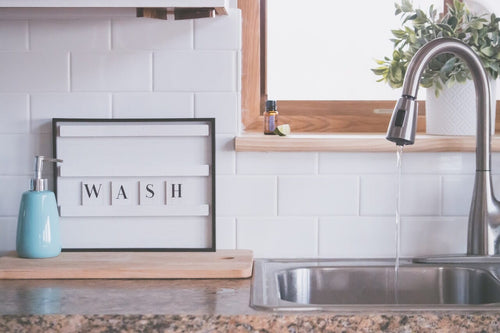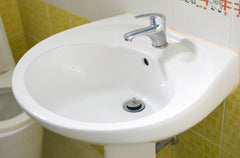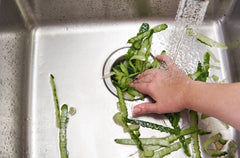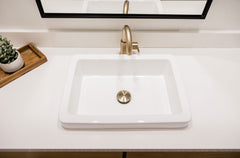When it comes to the kitchen sink, try to rely on something other than powerful chemical-based drain cleaners as a quick fix. These chemicals can sometimes do more harm than good, and even if the clog appears to be cleared, the splashback from a bad blockage can cause skin and eye irritation. Instead, you can use several methods to clear the sink drain clog, including common household items or even simple plumbing tools such as a plunger or snake.
1. Begin with Boiling Water

Hot water can be a great first step to removing the obstruction when your drain is clogged. It is a straightforward solution and can often be successful in dislodging any hair, grime, or soap scum that may be causing the blockage. Give it a try before attempting any other methods.
- Heat half a gallon of water on your stove or kettle until it reaches a boiling point.
- Pour the hot water directly into the hole in the sink or bathtub where the water drains away.
- Open the faucet to check if the water is draining smoothly. If it is moving too slowly or is not moving at all, try turning on the faucet again.
2. Examine the Garbage Disposal

If you have a garbage disposal in your kitchen sink causing the drain to back up, try turning it on. This may break up any clogs that have formed. If the disposal does not turn on, it could be due to it being overheated or not functioning properly. You can easily reset it by pressing the switch near the side or bottom. Once you have reset it, try turning it on again, and hopefully, the clog will be cleared.
To unclog a garbage disposal, you should disconnect the power first. Then you should use an Allen wrench to manually turn the blades to try and break up the blockage. If that doesn't work, follow the instructions to unclog it. Once the disposal is unclogged, turn the power back on and test it. Finally, turn on the faucet to check if the sink drainage is normal.
If your garbage disposal inspection does not show any sink drain blockages or problems, you can go directly to another way to clear the obstruction.
3. Plunge the Blockage Away
Once you have determined that the blockage is not caused by incorrect disposal, it's time to grab your plunger. It's important to note that while you can use a regular toilet plunger, a flat-bottomed plunger is ideal for this task.
- Put hot water into the sink until it reaches roughly halfway up the sides of the sink, and the water creates a seal around the drain hole.
- Position the plunger over the drain's opening and start moving it up and down quickly a few times.
- Take out the stopper and observe if the liquid is flowing out.
- Continue repeating these steps until the water runs out without obstruction.
It's time to try something else if plunging the sink multiple times still needs to fix the drainage problem.
To Be Concluded
Sometimes, simple home remedies do the trick in unclogging that pesky sink drain. If these first three didn’t work, stay tuned for part two!
Or, You Can Try The Shroom Company’s Innovative Solutions
If prevention is better than cure, our patented Shrooms are better than dealing with a clogged sink drain later on! No, these aren’t medical Shrooms. Our patented TubShrooms, SinkShrooms, ShowerShrooms, and ToiletShrooms collect hair every time, along with other debris! Shop now on our website!
More Articles from The Shroom Company
4 Top Tips for Preventing Hair from Clogging Your Pipes
A Guide to Selecting the Best Shower Drain Protectors
Best Bathtub Shower Drain Protector Strainers to Prevent Clogs







0 comments